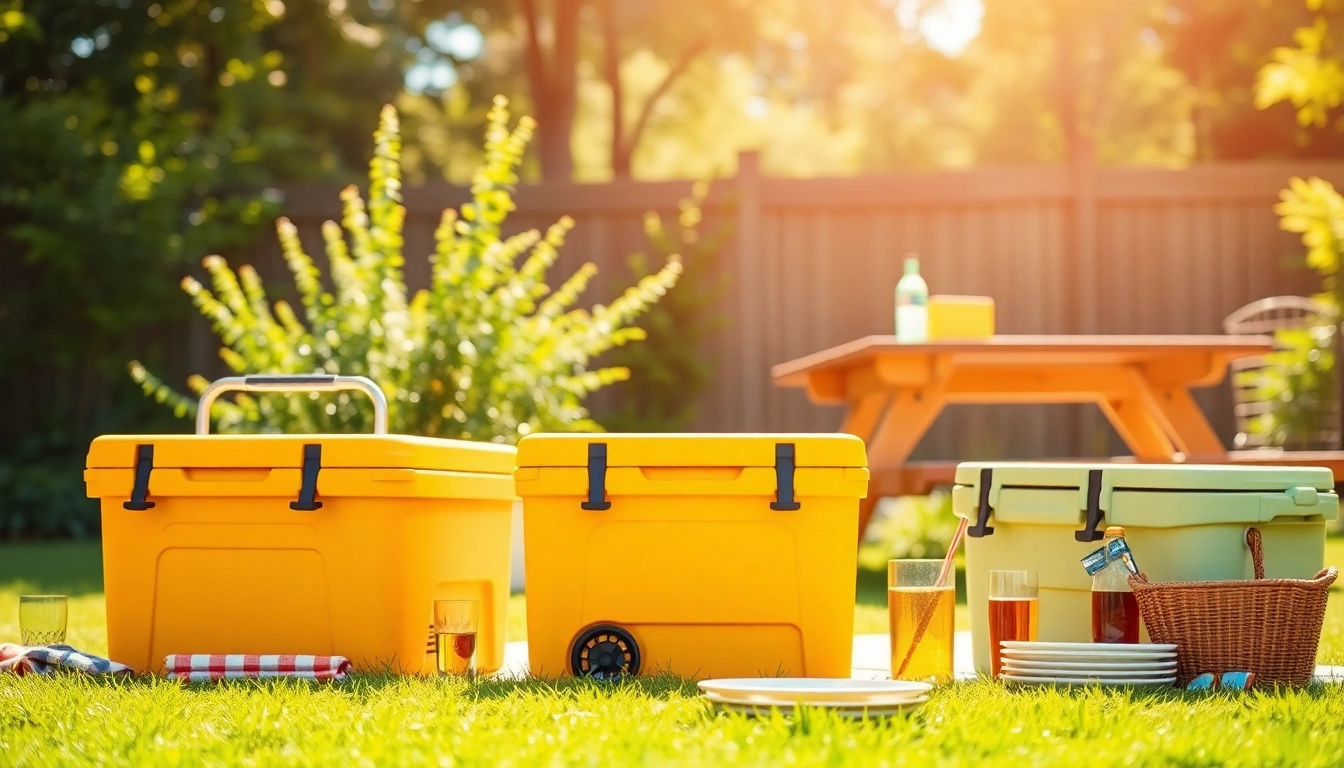Understanding the Benefits of Choosing a Cooler Like Yeti
When it comes to outdoor adventures or simple backyard gatherings, having a reliable cooler is essential. Many outdoor enthusiasts opt for premium brands like Yeti due to their reputation for durability and performance. However, the market is brimming with coolers like Yeti that offer similar quality at a fraction of the price. In this article, we’ll explore the reasons why a cooler like Yeti might be perfect for you and delve into the top alternatives available that won’t break the bank.
The Allure of High-Performance Coolers
Yeti coolers are well-loved for their rugged construction and impressive ice retention capabilities. They cater to a variety of outdoor activities, from fishing trips to camping excursions. These coolers are designed to withstand the harshest conditions, ensuring that your drinks and food stay icy cold for longer periods. However, with a price tag that often exceeds several hundred dollars, they may not fit everyone’s budget.
Cost Comparison: Yeti vs. Alternatives
When comparing Yeti coolers to alternatives, the question often arises: is the premium price justified? Yeti coolers generally offer extensive warranties, a robust build quality, and excellent ice retention. Yet, several brands on the market deliver comparable performance for much lower prices. Evaluating the cost against features like insulation quality, construction materials, and user reviews can provide insight into which options are genuinely worth considering.
Durability and Reliability Factors
Durability is one of the main selling points for high-end coolers. Yeti coolers, for instance, are rotomolded, which makes them resistant to impact and able to withstand the wear and tear of outdoor adventures. When looking for budget alternatives, assess the materials and construction methods used. Coolers made from high-density polyethylene or those featuring a similar rotomolded design often offer reliable durability without the hefty price tag.
Top Budget-Friendly Alternatives to Yeti Coolers
As the demand for high-performance coolers has risen, so has the supply of viable alternatives to Yeti. Below are some fantastic brands that offer excellent coolers without the elevated costs.
Brands Worth Considering
- RTIC: Known for aggressive pricing, RTIC coolers boast rotomolded construction and impressive ice retention capabilities.
- Igloo: The Igloo BMX series combines affordability with performance, featuring a rugged design ideal for outdoor use.
- Coleman: While not a direct competitor, certain models from Coleman offer functionality for casual users at a lower price point.
- Pelican: With lifetime warranties and solid construction, Pelican offers coolers that rival more expensive brands in terms of durability and performance.
Features that Matter: What to Look For
When selecting a cooler that competes with Yeti, consider the following features:
- Insulation: High-quality insulation, typically polyurethane foam, is essential for heat retention.
- Size and Capacity: Determine what size you need based on your typical outings. Smaller coolers are ideal for day trips, while larger options are suited for longer adventures.
- Drainage System: An efficient drainage system is crucial for quick clean-up and ensuring that melted ice doesn’t accumulate.
- Portability: Look for features such as durable handles, wheels, or a lightweight design for easy transport.
User Reviews and Ratings
User feedback can be an invaluable resource when evaluating cooler alternatives. Websites and forums dedicated to outdoor gear often showcase real-life experiences from fellow users. Pay special attention to reviews discussing insulation performance, build quality over time, and customer service experiences, as these factors can significantly influence your decision.
Performance Metrics: How Do These Coolers Measure Up?
With countless brands promoting their coolers, quantifying performance can help filter out the best options:
Insulation Efficiency
One significant factor that sets premium coolers apart is insulation efficiency. Many budget-friendly coolers now utilize advanced insulation materials that rival Yeti’s proprietary quality. Conducting ice retention tests and analyzing the materials’ thermal resistance can provide valuable insights into insulation capabilities.
Ice Retention Tests
Independent testing often highlights how long different coolers retain ice under similar conditions. For example, while Yeti coolers can sometimes boast retention periods of up to 10 days, several alternatives are also designed to keep ice for extended durations, making them strong contenders in performance metrics.
Practical User Experience
Real-world functionality plays a crucial role in determining the success of a cooler. Features such as easy opening lids, robust seals, and additional accessories (like cup holders and cutting boards) can greatly enhance user experience. Gathering data from user testimonials can help identify which coolers truly excel in day-to-day usage.
Real-Life Applications: When and Where to Use These Coolers?
Outdoor activities and settings often dictate the ideal type of cooler suited for a situation. Here are some practical uses:
Camping and Outdoor Adventures
When camping, a good cooler is essential for keeping food fresh and drinks cold. Coolers like those from RTIC or Igloo are excellent choices as they offer ample space for storing perishables and can withstand the elements.
Beach Days and Tailgating
For beach outings or tailgating events, seek a cooler with portability features such as wheels or shoulder straps. Brands like Coleman offer competitive options for beach enthusiasts, providing both ease of transport and effective insulation.
Everyday Use and Backyard Gatherings
Coolers aren’t just for adventures; they’re perfect for backyard gatherings, picnics, and barbecues. A smaller, more manageable cooler that still packs a punch with its insulation abilities can keep drinks chilled for hours.
Making the Right Choice: Tips for Selecting Your Ideal Cooler
Finding the perfect cooler for your needs involves more than just identifying a brand. Here are key factors to keep in mind:
Assessing Your Needs and Budget
Understanding your requirements—such as how often you use a cooler and what activities you primarily engage in—can help guide your choice. Determine your budget ahead of time and explore options that balance price with necessary features, ensuring you don’t overspend on unnecessary specifications.
Maintenance Tips for Longevity
Proper maintenance can prolong the life of your cooler. Always rinse it out after use, especially after storing food. Avoid leaving ice in the cooler for extended periods as it can lead to mold and odors. Store the cooler in a shaded, dry place when not in use to maintain its integrity.
Where to Buy for the Best Deals
To score the best deals on your chosen cooler, consider purchasing during off-seasons or professional outdoor equipment sales. Online retailers often provide discounts and have competitive pricing compared to physical stores. Checking customer reviews and verifying the return policy can also ensure satisfaction with your purchase.



